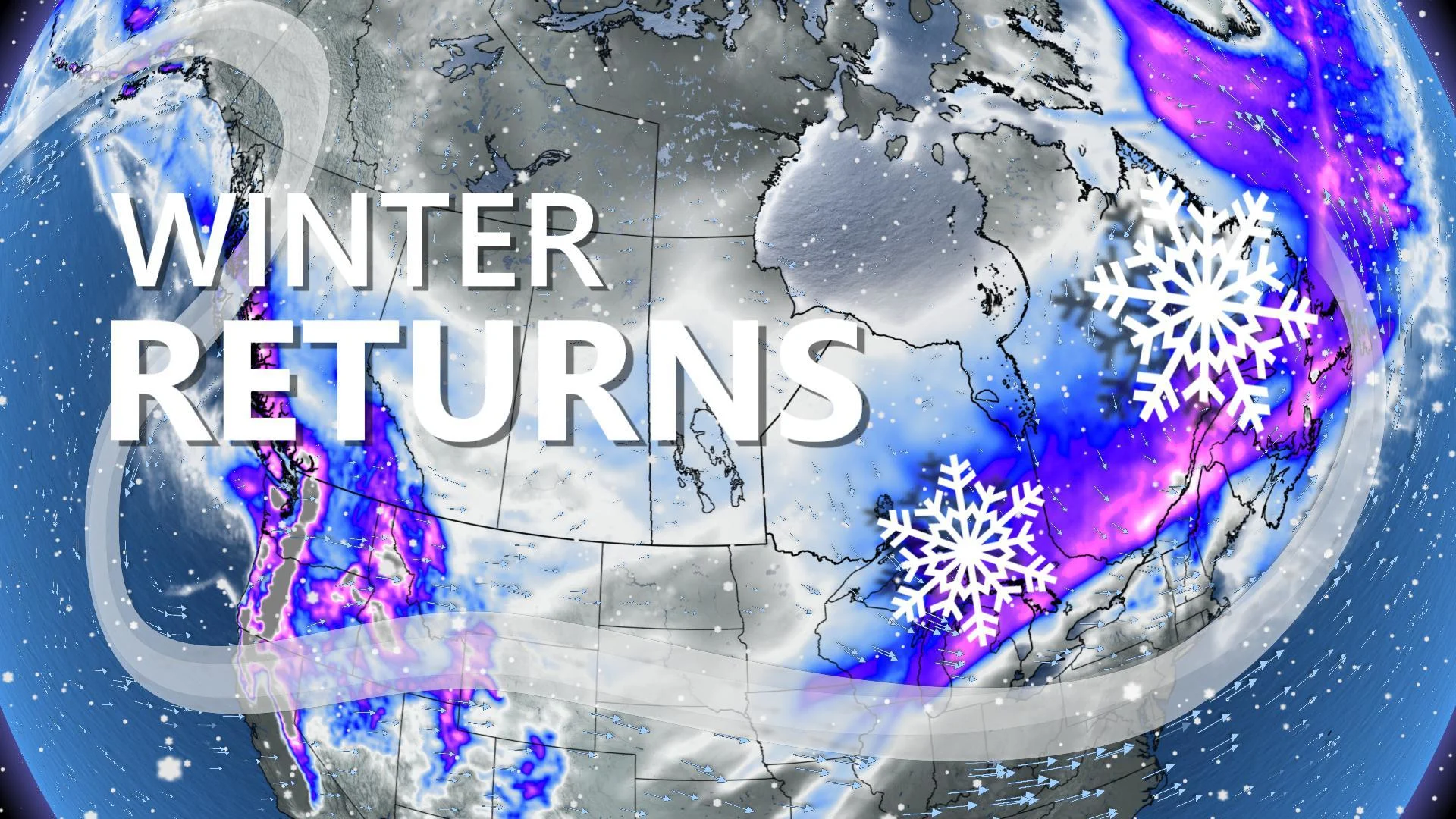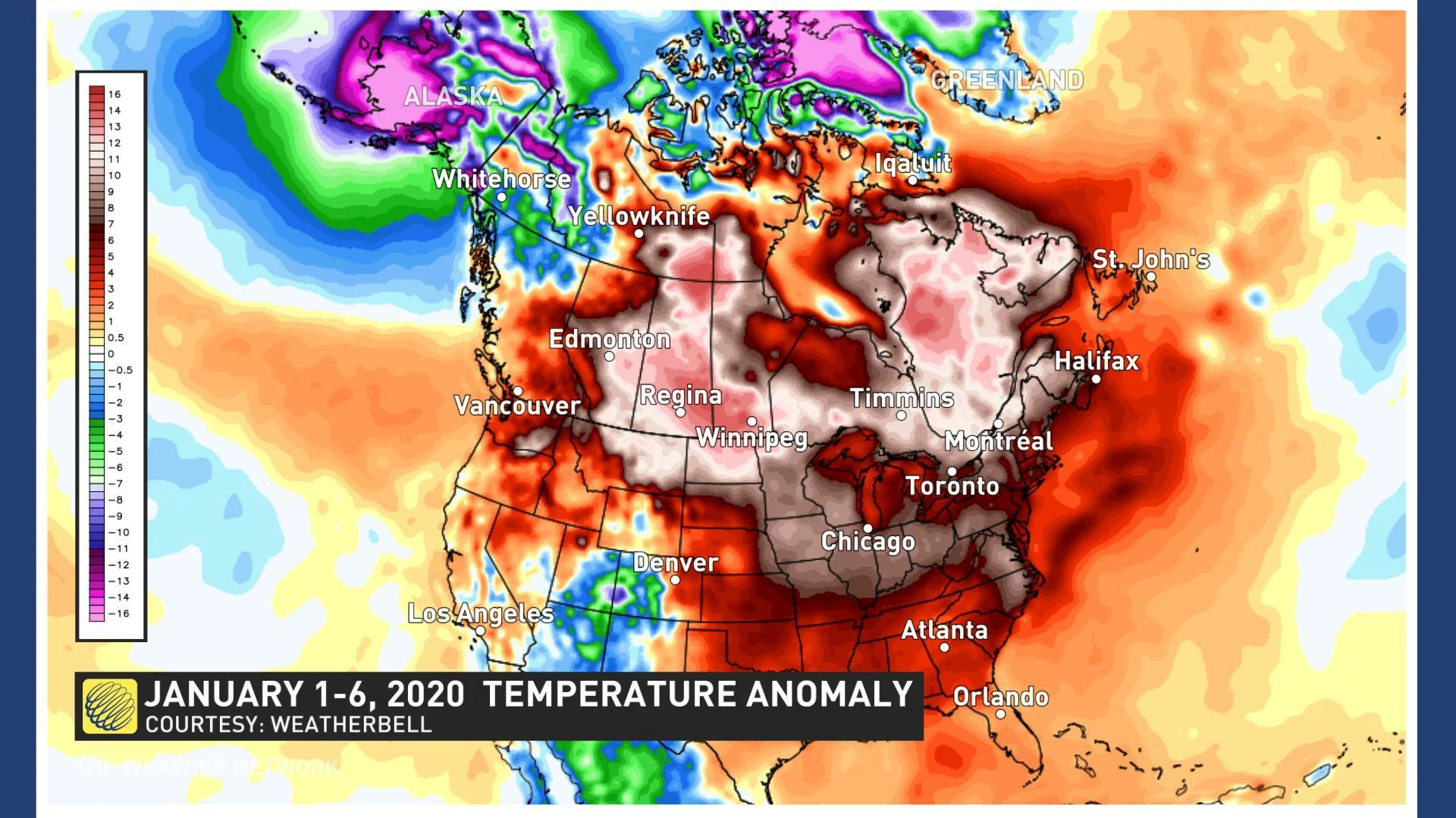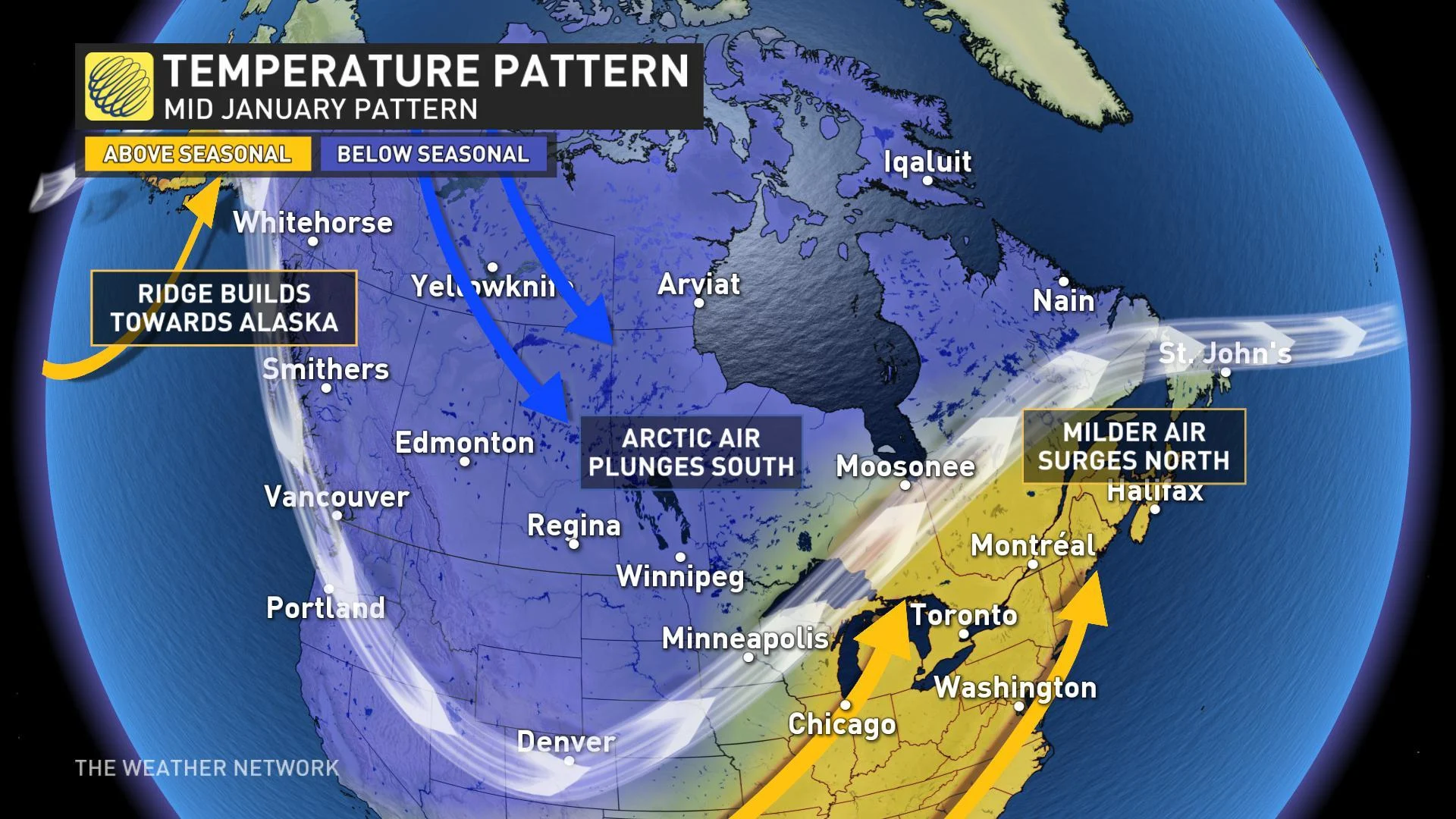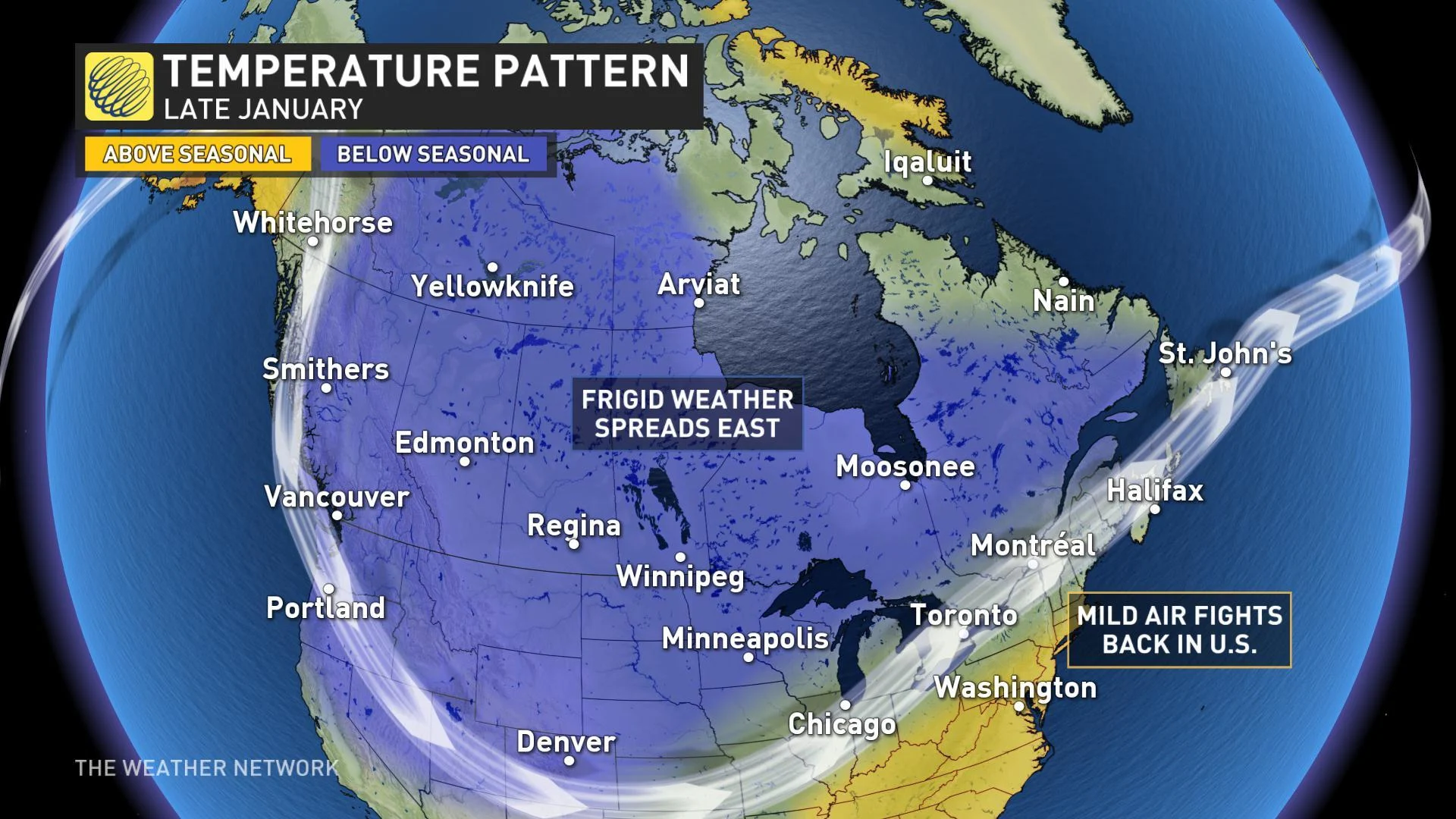
Welcome to winter, Canada: January pattern change already under way
The recent extended period of warmer weather has led many Canadians to ask, “where is winter?” A January pattern change is already under way.
The end of December and the first week of January felt more like late fall or early spring across most of Canada.
The map below shows temperature anomalies across North America for the past week with the various shades of orange, red and pink highlighting temperatures as much as 10 to 20 degrees above normal for this time of year.

However, we still had some high impact winter weather, especially across Atlantic Canada. We are nearing the time of year when “normal” temperatures are at their coldest levels of year, so much of Canada can still see snow and ice during a “mild” pattern.
The extended period of warmer weather has led many to ask “where is winter?” This is very reminiscent of last year when many were asking the same question. The similarities to last winter are actually quite remarkable. Just like this year we had a very cold November followed by an extended period of mild weather during December and into January. Winter did not settle in across most of Canada until after mid-January, but by March the questions had changed from “where is winter?” to “when is this long winter going to end?”
PATTERN CHANGE ALREADY UNDER WAY
So, will this winter continue to follow the sequence of last winter? A pattern change is already under way with several blasts of increasingly cold weather on the way for the western half of Canada. The coldest weather will arrive early next week with dangerously cold temperatures and wind chills across B.C. and the Prairies.

This arctic air will attempt to spread south and east, but it will continue to run into resistance as rather mild air will also attempt to surge north into Ontario, Quebec and Atlantic Canada. This clash of opposing temperature patterns will help to keep a very active pattern across this region with moisture-laden systems that will bring several rounds of rain, ice and snow to the region.
Looking ahead to the final 10 days of the month, the warm pattern over the eastern U.S. will continue to fight back, but it looks like the arctic air will have more of an influence on eastern Canada than it did earlier in the month.

An active pattern is also expected to continue from the Great Lakes to Atlantic Canada.
LOOKING AHEAD TO FEBRUARY: TRENDING COLDER
In our Winter Forecast we stated that we would not lock into our winter pattern until mid and late winter (similar to last year). So, are we still on track for a cold February for central and eastern Canada?
Most models have trended to a much colder pattern for February across central and eastern Canada. While we put very little stock in the models when developing a seasonal forecast, it does increase our confidence in the forecast when we see the models trending towards our ideas as we get closer to February.
SEE: Most of Canada still on track for long, cold winter
However, as we look at the global pattern, we can readily see that one of the key drivers of the winter pattern has reversed from expectations. There are still plenty of other key drivers of the pattern that support our original forecast, but this flip in the pattern does diminish our confidence in extended periods of severe cold making it into southern Ontario and southern Quebec. This also increases the potential for the focus of the cold to remain over western Canada.
'WHERE IS WINTER IN ONTARIO?' EXPERTS WEIGH IN ON THE 'HARSH' WINTER PREDICTED
While the consistency of the cold is in question for southern Ontario and southern Quebec, the changes in the global pattern actually enhances the potential for an active pattern across this region. Therefore, we should be still be on track to verify our forecast for above normal totals for snow and ice even if temperatures are not as cold as expected.
Please check back for an update and more details on February and March at the beginning of February.
